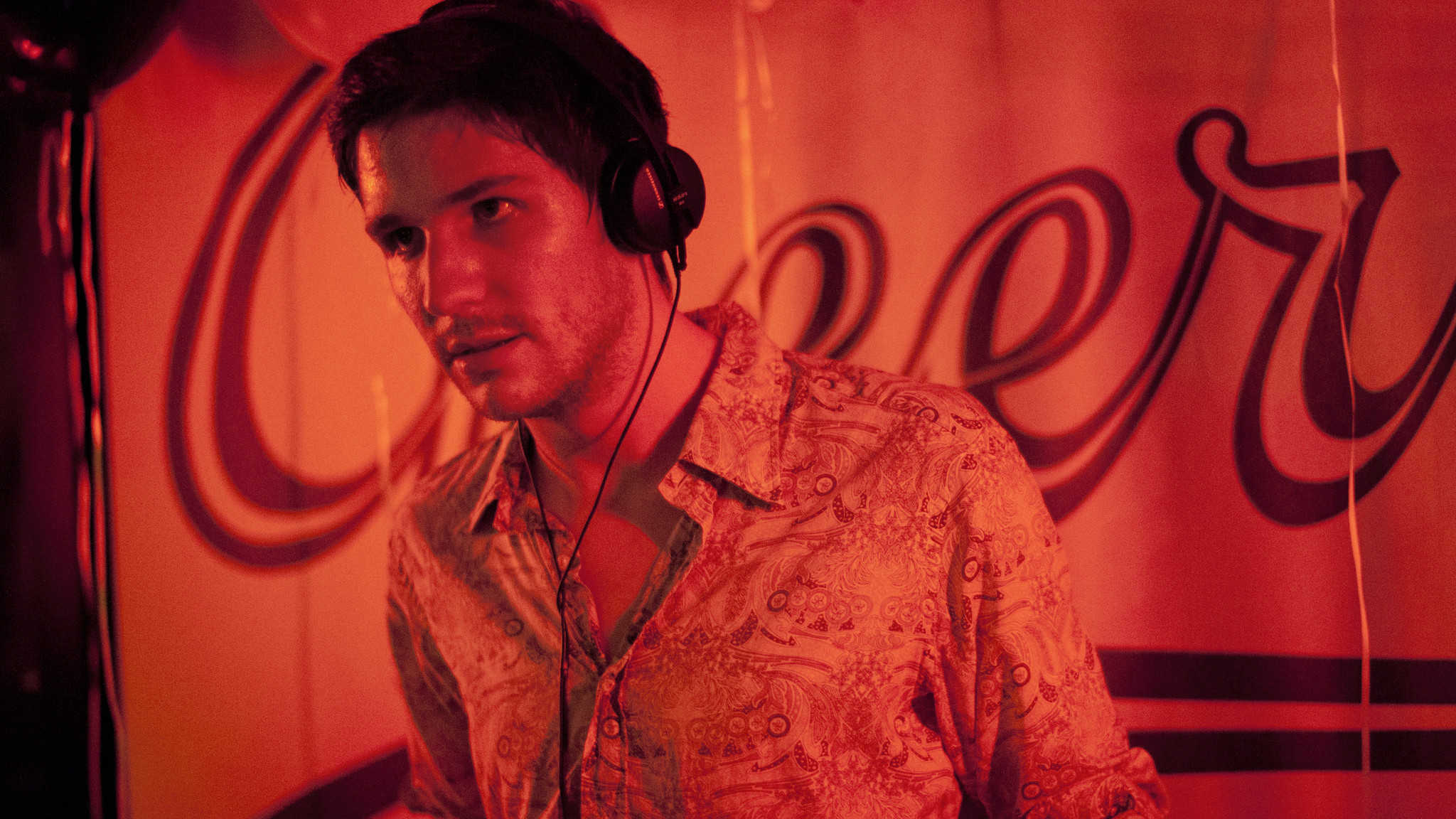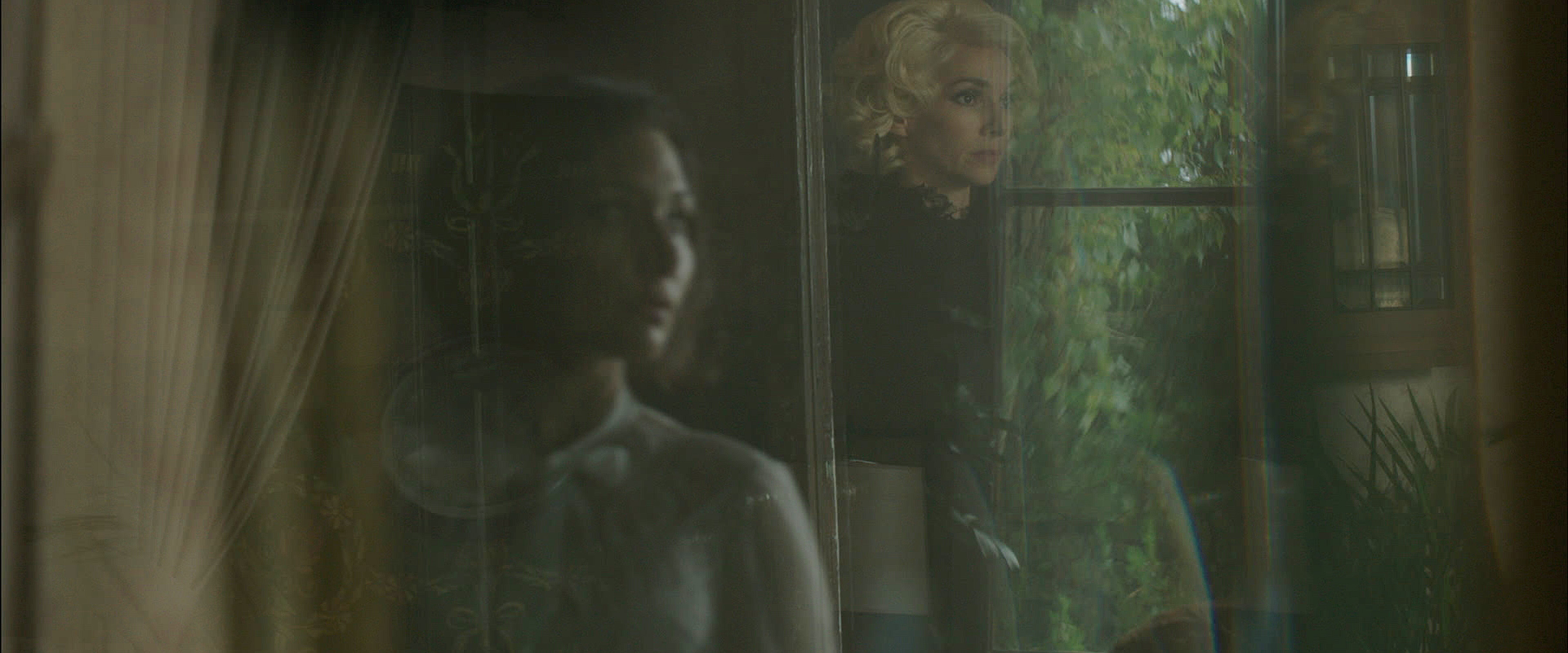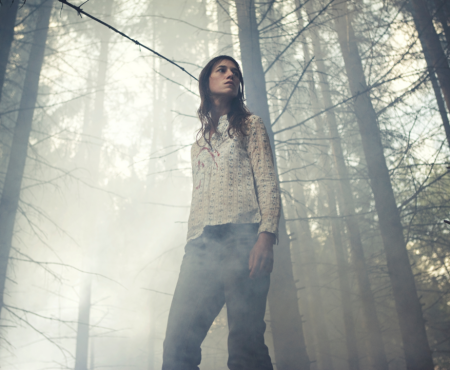10.) Heaven Knows What
An immersive, rough-hewn depiction of heroin-addicted street kids and the relationships Harley (Holmes) encounters within the community, the film elicits memories of Jerry Schatzberg’s gritty 1971 feature The Panic in Needle Park, but Heaven takes place on the more admittedly tidy streets of contemporary Manhattan. …[A]bove all, its unflinching authenticity is its most striking quality. A concurrent revival of the nineties obsession with the junkie might not be a desired trend, but for as long as heroin ravages cities and lives, writers like Arielle Holmes will seek to share their stories. If cinema can reflect the experiences of intravenous drug users, it is a necessary tool in shedding light on a stigmatized group. As the Safdie brothers know well, as the characters in Heaven Knows What stumble around everyday New Yorkers ostensibly ignored, it’s a world too often hidden in plain sight. — Christina Newland
9.) Girlhood
Girlhood explores in-betweenness as a space of both uncertainly and agency. Holed up in a hotel room on a weekend getaway, the girls try on shoplifted club dresses and lip-synch to Rihanna’s “Diamonds.” The song plays out in full as the girls sing along, bathed in blue light, an arresting sequence out of step with the temporal momentum of the rest of the film. “I told myself it was a perfect moment,” Marieme later recalls. But she cannot remain in that moment forever. She eventually leaves home to pursue a life in the city after being recruited by a local drug dealer. Beset by financial and threats to her personal safety, she returns to her family’s apartment complex. Hovering in front of the security door, her choices are laid out in front of her: return to her stifling family life or to her dangerous city life. It is an untenable position, but one that is again suspended in time and the choice is entirely hers. And for one more perfect moment, Vic lives again, neither here nor there. — Mallory Andrews
8.) Eden
On the surface, Mia Hansen-Løve’s exquisite, delicately nostalgic film Eden is a personal homage to the “French Touch” generation that gives electronic music its long-overdue eulogy in cinema. It is a beautiful, slick, and streamlined surface, ripe with melancholy and nostalgia, experienced both by the viewer and the film’s characters as they journey through two decades, starting with the early 90s. But just beneath this façade, there is more substance than meets the eye: a quietly aching tale of a musician (in this case, a DJ) and his all-consuming hunger to devour his passion freely, with no regard for its cost and aftermath. With its story flourishing steadily in both of these dimensions, Eden’s cadence is a mystical one, penetrating one’s attention and (eventually) soul, as it builds its momentum evenly and gradually. — Tomris Laffly
7.) Tangerine
There will be critics who scold Tangerine for supposedly exploiting the poor, simply because they’ll see it as confirming some of the stereotypes that they themselves hold but know aren’t “correct.” But that misses the ragged humanity that pulses through this film. It’s a messy romp, and ridiculously fun. — Dan Schindel
6.) It Follows
Though the film and its characters exist to some degree in a self-aware universe, it’s not a winking one, like The Cabin in the Woods or any of its ilk. It takes its premise and its inhabitants seriously, and its simultaneous commitment to and deconstruction of ideas about teen sexuality is what elevates It Follows to a higher plane: a spooky horror yarn with a slow-burning intelligence. — Kyle Turner
5.) The Duke of Burgundy
Just don’t call it a love story. Strickland leaves his finale open for interpretation (really, it’s only open to one of two interpretations – but that is, again, a different article) with the question being whether Evelyn is strong enough to break her need for their BDSM-routine, or whether Cynthia is strong enough to withstand it for the sake of standing by her woman. Hiding behind the mask of sensationalism, Strickland’s confronting deeply discomforting questions that pervade through all relationships, sadomasochistic or otherwise. When does sensual pleasure and emotional support trump the spark of romance? When is your partner just a vessel for obtaining whatever makes you comfortable? And when do you stop playing your role? — Jake Mulligan
4.) Blackhat
Blackhat works best when it’s suggesting visual connections between people and things, cities and tech. The brutalist buildings and gates and benches in the film’s many cityscapes start to resemble those blinking data servers and wires. And what about the hacker ideology? What about the fact that tech intelligence is heavily tied to loyalty (thus Dawai’s decision to bring on his best friend and sister, two people whom he can trust)? This is not a made-up ethos. Coders and hackers are people too. These are interesting ideas the film doesn’t exactly explore, but it becomes shorthand for a mode of thinking. Late in the film, when Hathaway and Lien are using low-tech materials to make their desperate, last-juncture showdown, one is reminded of the like-minded disposition that drives many computer tinkerers, who grew up building computers and refining their DIY mentality. Tech nerds familiar with this kind of mindset will likely appreciate this kind of specificity in Blackhat. This is a film motivated by sociology, not narrative, one driven by the spirit of cyber-culture instead of the functional cogs of storytelling. Take it or leave it. — Tina Hassannia
3.) Inside Out
From top to bottom, Inside Out is Pixar’s best film since Ratatouille, offering an excellent balance of humor and gut-wrenching emotion. Though a few gags land with less assurance than others–one depicts Riley’s parents’ minds with slightly predictable results–they’re quickly forgotten in place of a slew of top-tier set-pieces. (Joy and Sadness encountering an area of abstract thought is a highlight, inspired by Chuck Jones’ Duck Amuck.) The filmmakers’ insight into human emotion is not only why the film succeeds, but why Pixar succeeds so frequently. This film tries to be as universal as possible, identifying feelings that are not unique to one girl, but to all kids, and any adults willing to remember how they felt at a younger age. After 20 years of features, Pixar continues to aim high; Inside Out is another bulls’-eye shot. — Josh Spiegel
2.) Clouds of Sils Maria
Midway through the film, Maria tells Valentine, “I had a dream last night. The past and the present are blending together.” Her words hang heavy with significance, and she knows it. The “Maloja Snake” script pesters her with unwelcome visions of her youth and a frightening future she hopes won’t come to pass. The final scenes, as enigmatic and ambiguous as Assayas will allow, suggest her fears may not be unfounded. An untested director approaches Maria with an offer to star in a high-concept sci-fi picture. She’s reluctant to take on a film about clones and robots, and his pitch isn’t reassuring her. Their dialogue takes a few turns and ends with a meditation on whether a person must necessarily accept the time they’re born into. Like Sils Maria itself, it’s a bundle of difficult questions with no easy answer. The film knows enough not to pretend otherwise. — Charles Bramesco
1.) Mad Max: Fury Road
That Max himself is often lost in the rumble, however, feels very much by design. “What’s your name? What do I call you?” Furiosa asks Max mid-journey, and his reply is practically the movie’s statement of intent: “It doesn’t matter.” Restored to gruff anonymity here, he’s just another character, a man destined to be forgotten but for his deeds, and in that sense the series has come full circle to the still-vital 1979 opener. Where previously Max had loomed large in the sequels’ final moments, an iconic warrior figure set against the landscape, here, he simply disappears into a crowd. Instead, Fury Road closes on a low-angle shot of the surviving women staring down the audience, Miller suggesting a potential new direction for the testosterone-fueled dystopia—and, perhaps, cinema itself. — Luke Goodsell































7 thoughts on “Halftime Report: The Best Movies of 2015 So Far”
Clouds of sils maria <3
I was pleasantly surprised to see ‘Blackhat’ on this side of the top 20. It didn’t receive much love when it came out.
Mad Max number one? I’m not trying to be a troll, I just don’t understand the love for this film. It looks beautiful and has amazing action and choreography, but there was almost no plot and no character. How is this different from what Michael Bay does? I was honestly bored by the time the third act rolled around, knowing I was just going to be watching these characters drive back through what they had already come through.
I went for a re-watch last night (I went on opening night 8 or 9 weeks ago), and it very much is just a roarin’ good time. The minimal plot is to make way for “amazing action and choreography” because that’s what an action movie is all about, and that’s what Miller wanted to do. There is plot and character development, and a great dynamic amongst the war rig crew.
I’m not surprised some people didn’t like it, but I think it is an instant classic in the action film genre.
I went into the movie actually excited to see an extended chase scene, but for some reason, despite all of the beautifully filmed action, it just didn’t resonate with me. It’s a bit hypocritical of me to condemn it for being low on plot and character when I enjoy a movie like 300 so much. I’m really not sure what the missing element is for me, but I do intend to see it again when it comes out on Blu. Maybe I’ll feel differently.
For me it was more that I had had it up to here *brings horizontal hand just past head* with action movies. So much CGI, so much terrible dialogue, nothing very visually appealing or memorable, and all in this MCU-format. The genre felt bland. So I tended to go for these auteur features, and indies, and foreign, because at least there was something seemingly original about them even if they’re hit-or-miss. But going to see MM:FR with this mindset, I was floored by how much better action films are when CGI is only used minimally or not at all, like with the polecats and the war parties and the Coma-Doof Warrior guitar/bass player with a gang of drummers racing along. The main character, Max, felt so pushed to the side, and that’s because, as Miller himself as said, the story called for our protagonist to be Furiosa, not Max. It all sort of coalesced into this wonderful, adrenaline-fueled masterpiece of eye-popping stunts and chase sequences, made by the guy who basically inspired most of our sci-fi/action film auteurs working today.
I felt like most of the plot and character were simply implied. Everything about this movie, except the action-based stuff, is really subtle. The dialogue, the looks they give each other, the ways they react differently in various situations, etc. And re-watching it again recently definitely made it easier to pay attention to all of that.
It reminded me of the well-imagined the worlds in Terry Gilliam’s films.